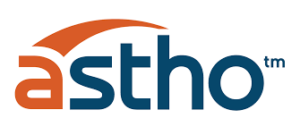New ASTHO Report on State and Territorial Preparedness for Drinking Water Emergencies
 The Association of State and Territorial Health Officials (ASTHO) recently released its State and Territorial Preparedness for Drinking Water Emergencies report to better understand the current gaps in state and territorial water preparedness and response, ASTHO conducted an assessment of state and territorial health agencies’ (STHAs) preparedness for water emergencies. The report also provides existing resources that states and NGOs found helpful.
The Association of State and Territorial Health Officials (ASTHO) recently released its State and Territorial Preparedness for Drinking Water Emergencies report to better understand the current gaps in state and territorial water preparedness and response, ASTHO conducted an assessment of state and territorial health agencies’ (STHAs) preparedness for water emergencies. The report also provides existing resources that states and NGOs found helpful.
Highlights:
- Drinking water emergency response is a shared responsibility between multiple programs within
S/THAs, as well as with external entities (e.g., environmental agencies). - Most states could benefit from increased information-sharing and collaboration on risk
communication strategies. - Depending on the jurisdiction, management of response efforts may change depending on
whether water supply is public versus private and whether the response is routine versus an
emergency.
Identified gaps and challenges included:
- Need for more state and territorial capacity-building efforts in coordinating emergency response activities, including a need for risk
communication guidance and coordination of unified messaging across stakeholders involved in emergency response—especially for contaminants of emerging concern, such as per- and polyfluoroalkyl substances (PFAS) and harmful algal blooms; - Regular exercises to test emergency response plans through Incident Command Structure;
- Need for stronger relationships between water utilities and local health officers to facilitate communication prior to an
emergency event.
The report also gives a list of needs noted by states and territories that fall under the themes of: funding resources, field-deployable resources, and online tools.

